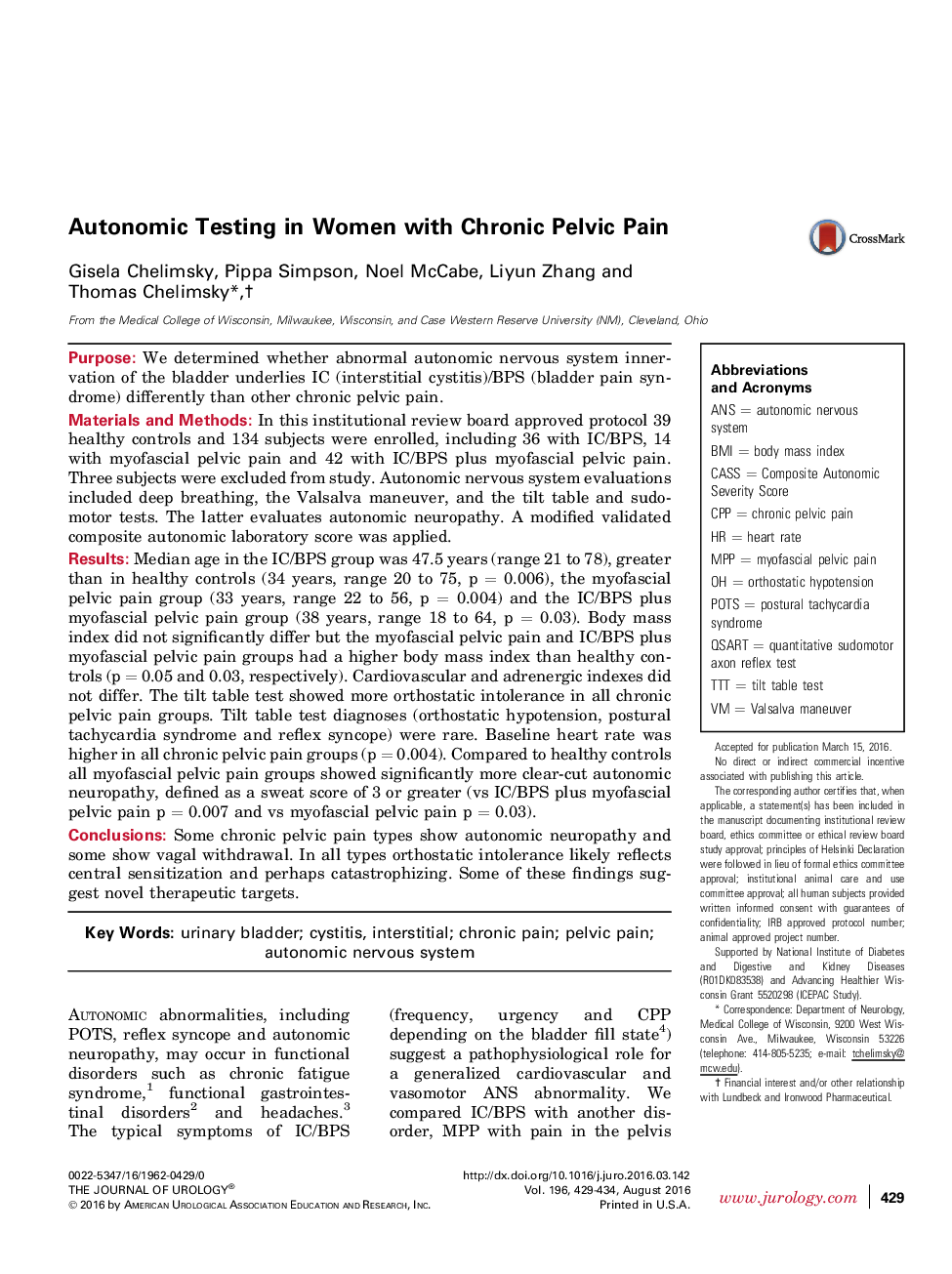| کد مقاله | کد نشریه | سال انتشار | مقاله انگلیسی | نسخه تمام متن |
|---|---|---|---|---|
| 3858403 | 1598873 | 2016 | 6 صفحه PDF | دانلود رایگان |
PurposeWe determined whether abnormal autonomic nervous system innervation of the bladder underlies IC (interstitial cystitis)/BPS (bladder pain syndrome) differently than other chronic pelvic pain.Materials and MethodsIn this institutional review board approved protocol 39 healthy controls and 134 subjects were enrolled, including 36 with IC/BPS, 14 with myofascial pelvic pain and 42 with IC/BPS plus myofascial pelvic pain. Three subjects were excluded from study. Autonomic nervous system evaluations included deep breathing, the Valsalva maneuver, and the tilt table and sudomotor tests. The latter evaluates autonomic neuropathy. A modified validated composite autonomic laboratory score was applied.ResultsMedian age in the IC/BPS group was 47.5 years (range 21 to 78), greater than in healthy controls (34 years, range 20 to 75, p = 0.006), the myofascial pelvic pain group (33 years, range 22 to 56, p = 0.004) and the IC/BPS plus myofascial pelvic pain group (38 years, range 18 to 64, p = 0.03). Body mass index did not significantly differ but the myofascial pelvic pain and IC/BPS plus myofascial pelvic pain groups had a higher body mass index than healthy controls (p = 0.05 and 0.03, respectively). Cardiovascular and adrenergic indexes did not differ. The tilt table test showed more orthostatic intolerance in all chronic pelvic pain groups. Tilt table test diagnoses (orthostatic hypotension, postural tachycardia syndrome and reflex syncope) were rare. Baseline heart rate was higher in all chronic pelvic pain groups (p = 0.004). Compared to healthy controls all myofascial pelvic pain groups showed significantly more clear-cut autonomic neuropathy, defined as a sweat score of 3 or greater (vs IC/BPS plus myofascial pelvic pain p = 0.007 and vs myofascial pelvic pain p = 0.03).ConclusionsSome chronic pelvic pain types show autonomic neuropathy and some show vagal withdrawal. In all types orthostatic intolerance likely reflects central sensitization and perhaps catastrophizing. Some of these findings suggest novel therapeutic targets.
Journal: The Journal of Urology - Volume 196, Issue 2, August 2016, Pages 429–434
